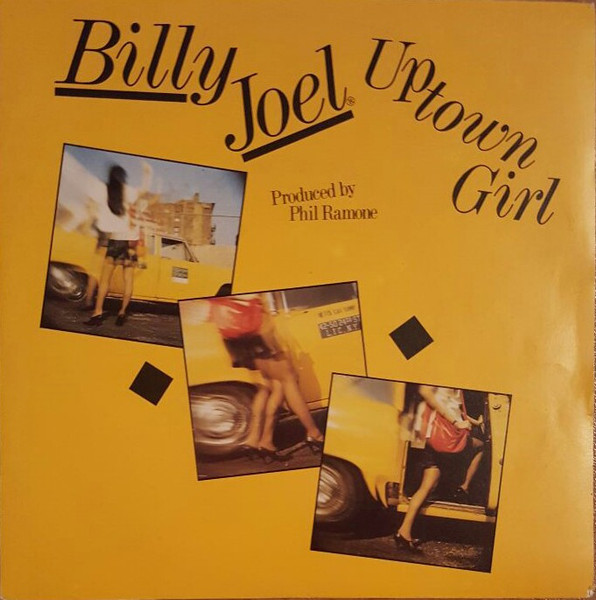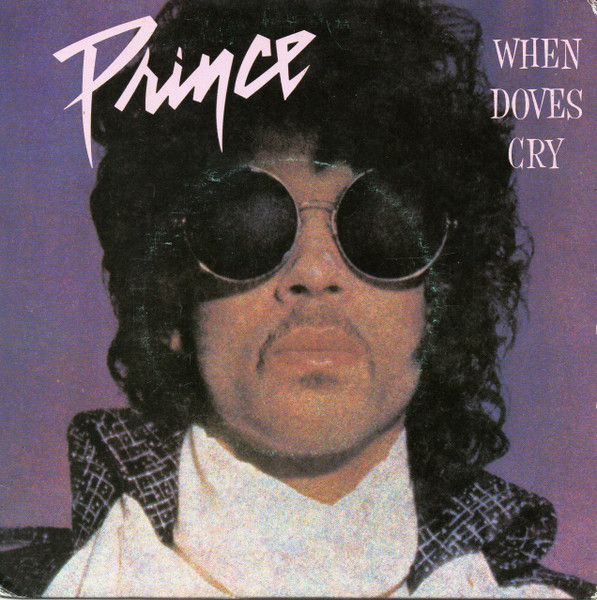 There’s a particular kind of magic in a song that can make you ache and smile at the same time. That rare combination of vulnerability and melody is what made “Every Rose Has Its Thorn” by Poison, released in 1988, an instant classic and one of the defining power ballads of the 1980s. Written by lead singer Bret Michaels during a moment of heartbreak, the song captures the bittersweet truth that love, while beautiful, often carries pain. Its tender lyrics, heartfelt vocals, and simple yet unforgettable acoustic arrangement made it a standout in an era dominated by high-energy glam metal, flashy guitar solos, and over-the-top stage theatrics. For fans then and now, “Every Rose Has Its Thorn” is more than a chart-topping single—it’s an emotional touchstone, a song that speaks directly to the fragility of the human heart.
There’s a particular kind of magic in a song that can make you ache and smile at the same time. That rare combination of vulnerability and melody is what made “Every Rose Has Its Thorn” by Poison, released in 1988, an instant classic and one of the defining power ballads of the 1980s. Written by lead singer Bret Michaels during a moment of heartbreak, the song captures the bittersweet truth that love, while beautiful, often carries pain. Its tender lyrics, heartfelt vocals, and simple yet unforgettable acoustic arrangement made it a standout in an era dominated by high-energy glam metal, flashy guitar solos, and over-the-top stage theatrics. For fans then and now, “Every Rose Has Its Thorn” is more than a chart-topping single—it’s an emotional touchstone, a song that speaks directly to the fragility of the human heart.
Poison, known for their glam metal flair, raucous stage presence, and high-octane hits like “Talk Dirty to Me” and “Nothin’ But a Good Time,” might not have seemed like the obvious creators of a tender, emotional ballad. Yet “Every Rose Has Its Thorn” proved that even bands famous for their party anthems could channel raw vulnerability into a song that resonates universally. Unlike the band’s hard-hitting tracks, this ballad is introspective, intimate, and melodic, capturing a moment of personal reflection and heartbreak that is immediately relatable.
The Story Behind the Song
Bret Michaels has recounted the story behind “Every Rose Has Its Thorn” in interviews for decades, and it only adds to the song’s emotional depth. Inspired by a painful breakup while the band was on tour, Michaels wrote the song after a night of personal reflection and heartbreak. According to his account, the lyrics came together while he sat in a hotel room, strumming his acoustic guitar and channeling the raw emotion of lost love. This personal context is crucial to understanding why the song resonates so deeply—it’s not an abstract lament about love gone wrong; it’s a first-hand account of the kind of pain that almost everyone experiences at some point in their lives.
The simplicity of Michaels’ lyrics enhances the song’s power. Lines like,
“Every rose has its thorn / Just like every night has its dawn,”
speak directly to universal truths about love and loss, while using imagery that is easy to visualize and feel. The juxtaposition of beauty and pain—the rose and its thorn—makes the metaphor immediately accessible, and the song’s honesty gives it lasting emotional weight.
Musical Structure and Style
Musically, “Every Rose Has Its Thorn” represents a deliberate shift for Poison. At a time when glam metal often emphasized electrifying guitar riffs, theatrical solos, and bombastic drum fills, the song strips the production down to its emotional core. The acoustic guitar opens the track with a gentle arpeggio, establishing a reflective and intimate mood. Bret Michaels’ vocals follow with a raw, almost conversational tone, carrying the emotional weight without relying on vocal theatrics.
The electric guitar subtly enters later in the song, providing melodic support without overshadowing the acoustic foundation. Rikki Rockett’s understated drumming and Bobby Dall’s melodic bass work round out the arrangement, creating a cohesive and resonant sound that complements the heartfelt lyrics rather than competing with them. The result is a power ballad that feels both personal and grand, intimate yet universally relatable.
Chart Success and Cultural Impact
Upon its release as a single from the band’s Open Up and Say… Ahh! album, “Every Rose Has Its Thorn” quickly climbed the charts. It reached number one on the Billboard Hot 100, cementing Poison’s place in the pantheon of glam metal bands capable of crossing over into mainstream pop appeal. Its success marked a significant moment in the late 1980s, when hard rock bands were experimenting with softer, more emotional material to reach broader audiences.
The song’s appeal was not limited to radio airplay. Its accompanying music video, featuring Michaels performing amidst a melancholic backdrop interspersed with clips from the band on tour, further amplified the emotional resonance. Fans connected with the vulnerability on display, a stark contrast to the band’s typically exuberant, party-oriented image. This duality—rock star bravado paired with heartfelt honesty—helped the song become an enduring classic.
The Power Ballad Phenomenon
“Every Rose Has Its Thorn” is often cited as a quintessential example of the power ballad, a subgenre that became synonymous with 1980s rock. Power ballads combined emotional, often melancholic lyrics with a swelling musical arrangement, allowing bands to showcase a softer, more vulnerable side. While other bands of the era—like Bon Jovi with “Livin’ on a Prayer” or Guns N’ Roses with “Sweet Child o’ Mine”—crafted hits with dramatic flair, Poison’s ballad stood out for its simplicity and honesty.
Unlike some power ballads that relied heavily on elaborate production or theatricality, “Every Rose Has Its Thorn” conveys emotion with minimal embellishment. The acoustic guitar and Michaels’ vocal performance create a sense of intimacy, inviting listeners into the songwriter’s personal experience. This stripped-down approach is part of what allows the song to remain timeless. Even decades later, its emotional resonance is immediate and unfiltered.
Emotional Resonance and Universal Appeal
What makes “Every Rose Has Its Thorn” endure is its emotional universality. It captures the bittersweet nature of love—its beauty, its fleeting moments of joy, and its inevitable heartbreak. Listeners don’t need to know the details of Michaels’ personal experience to relate; the song’s imagery and sentiment are universal. Almost anyone who has experienced love and loss can find a reflection of themselves in its lyrics.
The song also balances melancholy with hope. While it acknowledges the pain of a relationship’s end, it reminds listeners that life goes on, as implied in lines like,
“Just like every night has its dawn.”
This combination of realism and optimism makes the song emotionally complex, yet accessible, contributing to its lasting appeal.
Live Performances and Fan Connection
“Every Rose Has Its Thorn” quickly became a centerpiece of Poison’s live shows. Fans would often sing along in unison, creating moments of shared vulnerability and communal catharsis. These performances reinforced the song’s emotional impact and cemented its status as a fan favorite. Michaels often shared personal anecdotes about the song during concerts, deepening the connection with audiences and emphasizing the authenticity behind the lyrics.
Over the years, the song has appeared in countless compilations, live albums, and even tribute albums, solidifying its place in rock history. It continues to resonate with new generations of listeners, who find relevance in its themes despite changes in musical trends.
Covers, Pop Culture, and Longevity
The cultural footprint of “Every Rose Has Its Thorn” extends far beyond Poison’s own catalog. Numerous artists across genres have covered the song, from country renditions to acoustic reinterpretations, demonstrating its versatility and enduring emotional power. Its presence in films, television shows, and even reality competitions has helped maintain its visibility in popular culture.
The song’s longevity is also a testament to the universality of its message. Heartbreak is timeless, and the metaphor of the rose and its thorn remains immediately recognizable and deeply resonant. Even as musical styles evolve, the fundamental truths conveyed in the song—love’s beauty and its pain—continue to strike a chord with listeners of all ages.
Technical Excellence and Songwriting Craft
While much of the attention focuses on the emotional impact of “Every Rose Has Its Thorn,” it’s worth noting the technical craft behind the song. Bret Michaels’ songwriting demonstrates a keen understanding of melody, phrasing, and pacing. The song’s chord progression is deceptively simple, but it supports the narrative arc of longing, heartbreak, and reflection.
The interplay between acoustic and electric elements is also expertly managed. The arrangement evolves subtly throughout the track, adding depth without detracting from the intimacy of the lyrics. Producer Tom Werman, known for his work with Cheap Trick and Mötley Crüe, helped Poison achieve a polished sound that preserved emotional honesty while making the song radio-ready.
A Timeless Ballad
Decades after its release, “Every Rose Has Its Thorn” remains a definitive example of the power ballad, a song that transcends its era while retaining the distinctive hallmarks of 1980s glam metal. It’s frequently cited as one of the greatest rock ballads of all time and continues to appear on classic rock radio, streaming playlists, and live performances. Its appeal lies in its combination of melodic craftsmanship, lyrical honesty, and universal emotional resonance.
For many listeners, it serves as a reminder that even in the midst of heartbreak, there is beauty to be found. The metaphor of the rose and its thorn continues to resonate because it speaks to a fundamental truth: joy and pain are inseparable aspects of love, and both deserve to be acknowledged.
Conclusion: Beauty, Pain, and Musical Legacy
“Every Rose Has Its Thorn” by Poison is more than just a hit single from 1988; it’s an enduring emotional statement that captures the complexities of love and heartbreak. Bret Michaels’ heartfelt lyrics, combined with the band’s sensitive musical arrangement, create a song that is intimate, relatable, and timeless. Its status as a power ballad has cemented its place in rock history, bridging the gap between glam metal exuberance and personal vulnerability.
More than three decades later, the song continues to resonate with listeners, old and new, serving as a reminder that love is beautiful, fleeting, and sometimes painful—but always worth experiencing. “Every Rose Has Its Thorn” is not just a song; it’s a testament to the enduring power of music to articulate universal human emotions and to connect with audiences across generations. It stands as a symbol of both the heartache and the hope that make love, and music, so unforgettable.


